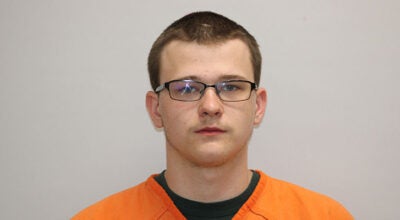Growing pains: How one southern Minnesota city is taking steps to address diversity, inclusion
Published 6:00 am Wednesday, February 17, 2021
|
Getting your Trinity Audio player ready...
|
By Hannah Yang
How one southern Minnesota city is taking steps to address diversity, inclusion
After a challenging year in which it grappled with acts of racism, tough conversations and a reckoning on what it can be moving forward, the small southwestern Minnesota city of Marshall is building a new committee that city leaders hope will help bridge divisions and address inequities in their community.
Marshall has grown over the past two decades to a city of more than 13,000 people, with an increasingly diverse population. And as the city’s demographics change, so has its identity.
Now, as part of the city’s strategic plan, Marshall has formed a new Diversity, Equity and Inclusion Commission. Its goal: To launch tough conversations, so that, eventually, the city becomes a more welcoming place for all of its residents.
Commission Chair Jefferson “Jay” Lee IV said there wasn’t a specific event or situation that led to the commission’s creation, but that the focus is to be “proactive, not reactive.”
“We want to be able to share information and dialogue with all races, ethnicities and genders within our community,” said Lee, who is also the director of diversity and inclusion at Southwest Minnesota State University. According to 2019 census estimates, just under 80 percent of Marshall’s population is white — and about 13 percent of the city’s residents were born in another country.
“We hope to uplift the members of our community and make people feel comfortable and want to be here,” Lee said.
That work, Lee said, might take the form of cafes in which residents can meet with commission members; or working with representatives from city departments, from housing to parks and recreation, to make resources more accessible to residents.
But while the commission is still in its infancy — it’s still in search of nine additional members — Lee says its vision can change to fit whatever residents might ask from it.
“Will we be a commission to fund for specific projects? That could be an initiative that is put out there,” he said. “Would we be an advocate in some real social issue? The people of the city will determine our role and how we do those things.”
The commission itself might be new, but the issues it seeks to address aren’t.
For towns and cities across the state, the police killing of George Floyd in Minneapolis last summer prompted a reckoning on racial justice, as people challenged their hometowns to soul-searching.
In Marshall, those calls for justice and dialogue were steady all summer — with rallies, demonstrations, and a memorial to honor Floyd.
But there were flash points, too: A couple protesting COVID-19 restrictions showed up to the local Walmart wearing swastikas on their masks. Black Lives Matter signs were vandalized. Demonstrators were met with counter-protests. Divisions over an LGBTQ pride flag in the middle school cafeteria flared. Tensions were high, leading up to a contentious presidential election.
But moving forward, Dede Williams is hopeful. She’s a member of the Mnicoujou band of the Cheyenne River Sioux Tribe, and has lived in Marshall since 2005.
While most of her experiences in the community have been positive, she said, she feels at times her presence isn’t welcome. And she often hears stories from other residents of color who have had similar experiences.
“I’ve met beautiful people in this community and I don’t want to negate the beautiful people that I met here, because they are here too,” she said earlier this summer. “But there is that sickness that’s swelling in the community that needs to be talked about.”
Over the years, Williams has taken part in many of the discussions happening in her community around inclusion and equity. She said she thinks the commission, with its mission of bridging division and starting dialogue within the community is a step in the right direction.
She’s cautiously hopeful that it might spark action in bringing people together.
“We need this because it takes every single person in the community to feel wanted and needed to feel part of that community, to make a community work successfully,” she said.





